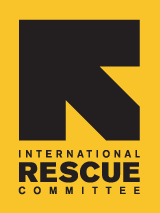
The First Interview
This publication is a work in progress, and part of an ongoing project. More data is being collected so the results presented here are not yet intented for interpretation or sharing
Project Dandelion is a product designed from the ground up to prepare primary-school aged refugee children for greater cognitive, social, emotional and academic success. A growing body of evidence shows that social-emotional learning (SEL) for education in emergencies can promote resilience, improve well-being, and lead to greater foundational learning outcomes.
Dandelion extends learning beyond the classroom, harnessing the time and energy of parents and older role models in a “whole community” approach. We envision a product that delivers interactive and bite-sized content that motivates teachers, parents and youth themselves to engage, digest, use, and apply SEL content for school-aged refugee children.
Through lightweight mobile and computer interactions, Dandelion marshals all stakeholders involved in a child’s development - teachers, parents, and older role models - to overcome the effects of trauma and open a child’s mind to learning. The first phase of the project includes interviews with these stakeholders: teachers, caregivers, and young adults. The interviews were taken from August 2017 onward.
This is the first interview. Also check out the interview with caregivers and the one with teachers.
Interviewees gender
Interviewees role as a stakeholder
About the respondents
The population of interviewees currently consists of some 300 teachers, caregivers and young adults, originally from Burundi or Congo. Male respondents outweigh female ones at the moment, and a majority is young adult. The respondents were asked a small set of questions about their use of and acquintance with mobile phones and the internet.
Interviewees country of origin
Interview Results
How often do you use a mobile phone?
When do you use the phone?
Mobile phone use
Mobile phone use is widespread, with more than 80% of all respondents using it several times a day. Male respondents and teachers have the highest proportions using a mobile phone more than 10 times a day. Asked when, during the day, they used their phone, a third answered "all the time".
Respondents on average named 5 different uses for their phone: Aside from making calls, and texting, a majority also listens to music and uses facebook on their phone.
What do you use the phone for?
Almost all respondents have their own mobile phone. Again, male and teaching respondents in a higher proportion than their counterparts. While a couple of brands stand out, there is a wide array of devices and networks in use among the respondents.
Many respondents use multiple networks for their mobile phones and the vast majority either owns an Itel or a Tecno phone, both relatively affordable brands.
Whose mobile phone do you use?
What mobile network do you use?
What kind of mobile phones do you use?
Weekly spending on airtime for all respondents typically falls between TZS 1,000 and TZS 5,000 (Tanzanian shilling). Only a small group, mostly men, spends more than TZS 5,000 on airtime.
Comparing weekly spending with how respondents access the internet hints at some relevant hypotheses: Respondents that spend less than TZS 1,000 on airtime also overwhelmingly report they do not access the internet, so the cost of accessing the internet without wifi might be an important inhibitor.
Conversely, respondents that spend TZS 1,000 or more on airtime proportionally access the internet with their paid for airtime most often. The higher spending of these respondents could be curbed with better access to (or better use of) wifi.
How much do you spend on airtime every week?
How do you access the internet?
Access to internet compared to weekly spending on airtime
Internet use
A surprising small number of respondents makes use of wifi to access the internet. Most respondents use the data they have purchased on their phone. Over a third of all respondents say they do not access the internet.
In both the female subgroup and the young adult subgroup, the number of respondents that do not access the internet outweighs the number that do.
About two thirds of all respondents say they often use their mobile devices to send or receive money. Another sizeable group say they sometimes use it or have done it at least once, and around 20% say they have never done it. Female respondents and respondents originally from Burundi have a higher proportion replying they never use their mobile for financial services.
Do you use your mobile to send or receive money through?
Literacy
Almost all respondents confirm they can read and write and the overall preferred language to read text messages and listen to audio content is Kiswahili. Less than a dozen of the caregivers and young adults indicate they can not read or write.
Proportionally, the young adults skew towards Kiswahili most heavily, favoring it over Kirundi, English or French.Comparing by country of origin shows that 95% of Congolese respondents prefer Kiswahili and all respondents favoring Kirundi are from Burundi.